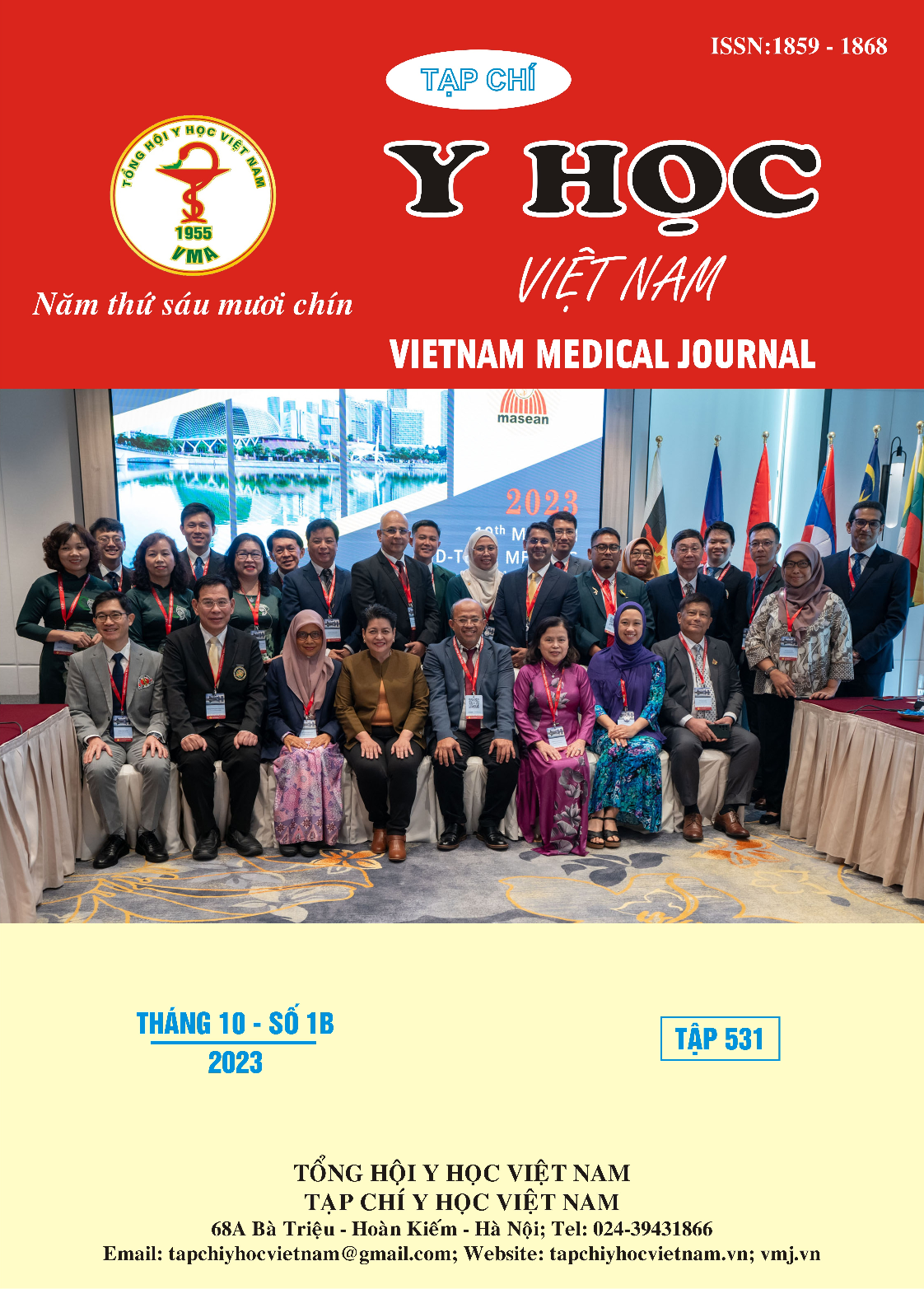PREDICTING FACTORS IN PATIENTS WITH ACUTE RESPIRATORY FAILURE ON HELMET-NON-INVASIVE VENTILATION
Main Article Content
Abstract
Objectives: To evaluate predicting factors patients with acute respiratory failure on helmet-non-invasive ventilation. Method: a prospective interventional study, data was collected on all patients diagnosed with mild and modrate acute respiratory failure who were on Helmet NIV during the period from June 2022 to June 2023. Results: 30 patients were inrolved in this study in which male/female ratio was 2:1, mean age: 67.7±12.805; the common age group was 60-80 years old. The most common cause of acute respiratory failure was pneumonia (23.3%), followed by acute pulmonary edema (30%) and COPD exacerbations (23.3%). The success rate with helmet NIV was 33.3% (10/30 patients). The acute pulmonary edema had a higher success rate than that on patients withpneumonia and COPD exacerbations (OR: 4.0; 95% CI: 1.255-12.754). Borg score less than 6 (OR: 4.3; 95%CI: 0.845-22.23), PaCO2 below 42.5 (OR:16.714; 95%CI: 1.742-160.35), HACOR score less than 7.5 (OR: 7.36; 95% CI: 0.779-69.58) were valuablable predicting indicators. Conclusions: The Borg score, PaCO2, and HACOR score can be used to predict helemt-non-invasive ventilation in patients with respiratory failure. Acute pulmonary edema is most successful group when helmet-non-invasive ventilation applied.
Article Details
Keywords
respiratory failure, non invasive ventilatin, helmet – noninvasive ventilation, helmet-cpap system
References
2. Carron M., Freo U., BaHammam A.S. và cộng sự. (2013). Complications of non-invasive ventilation techniques: a comprehensive qualitative review of randomized trials. British Journal of Anaesthesia, 110(6), 896–914.
3. Esquinas Rodriguez A.M., Papadakos P.J., Carron M. và cộng sự. (2013). Clinical review: Helmet and non-invasive mechanical ventilation in critically ill patients. Crit Care, 17(2), 223.
4. Amirfarzan H., Cereda M., Gaulton T.G. và cộng sự. (2021). Use of Helmet CPAP in COVID-19 – A practical review. Pulmonology, 27(5), 413–422.
5. Hong S., Wang H., Tian Y. và cộng sự. (2021). The roles of noninvasive mechanical ventilation with helmet in patients with acute respiratory failure: A systematic review and meta-analysis. PLoS ONE, 16(4), e0250063.
6. Vũ Văn Đính (2003), Suy Hô Hấp Cấp. Hồi Sức Cấp Cứu Toàn Tập, Nhà xuất bản Y học.
7. Bộ Y tế (2767). Hướng dẫn chẩn đoán và điều trị bệnh phổi tắc nghẽn mạn tính. .
8. Vo Viet H., Nguyen Van M., và Tran Xuan T. (2018). The early use of non-invasive ventilation for acute respiratory failure in icu. JMP, 8(4), 23–27.
9. Phan Thị Lan Hương (2020). Áp dụng bảng iểm HACOR trong dự đoán kết quả thành công của thở máy không xâm nhập trên bệnh nhân suy hô hấp cấp. Luận văn thạc sĩ Y học - Trường đại học Y Hà Nội.
10. Carron M, Freo U, Zorzi M, Ori C (2010). Predictors of failure of noninvasive ventilation in patients with severe community-acquired pneumonia. J Crit Care, 25:540-514.


